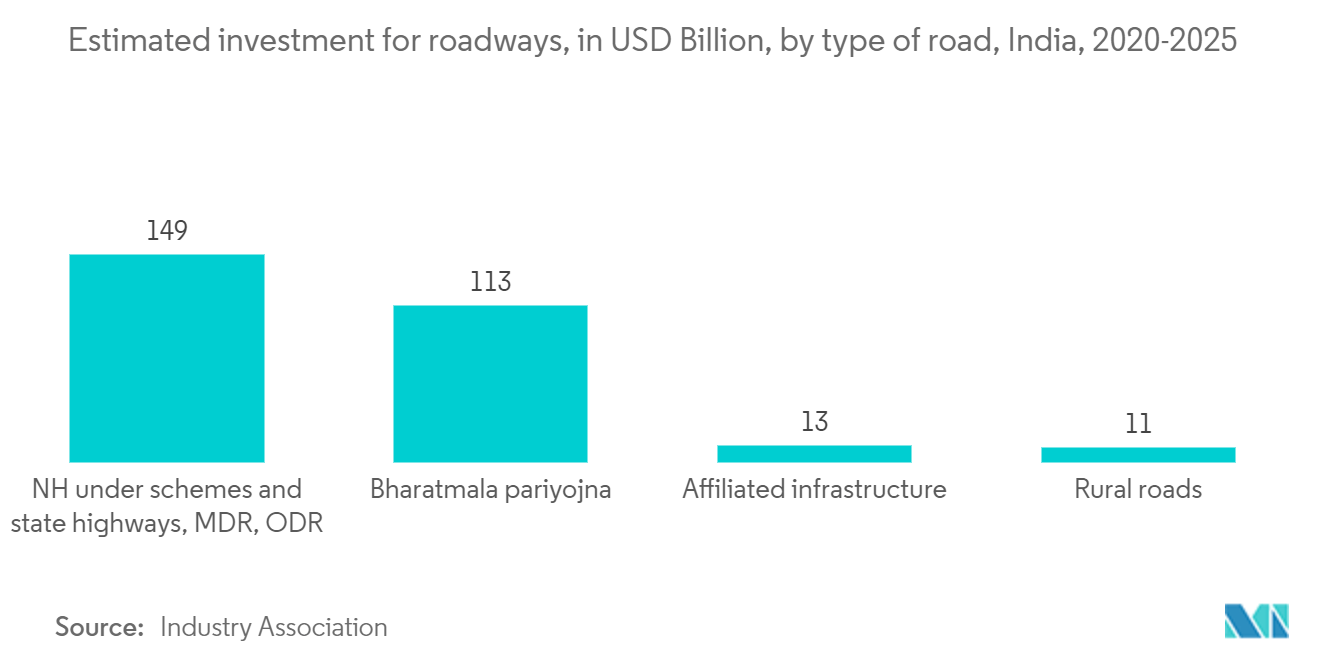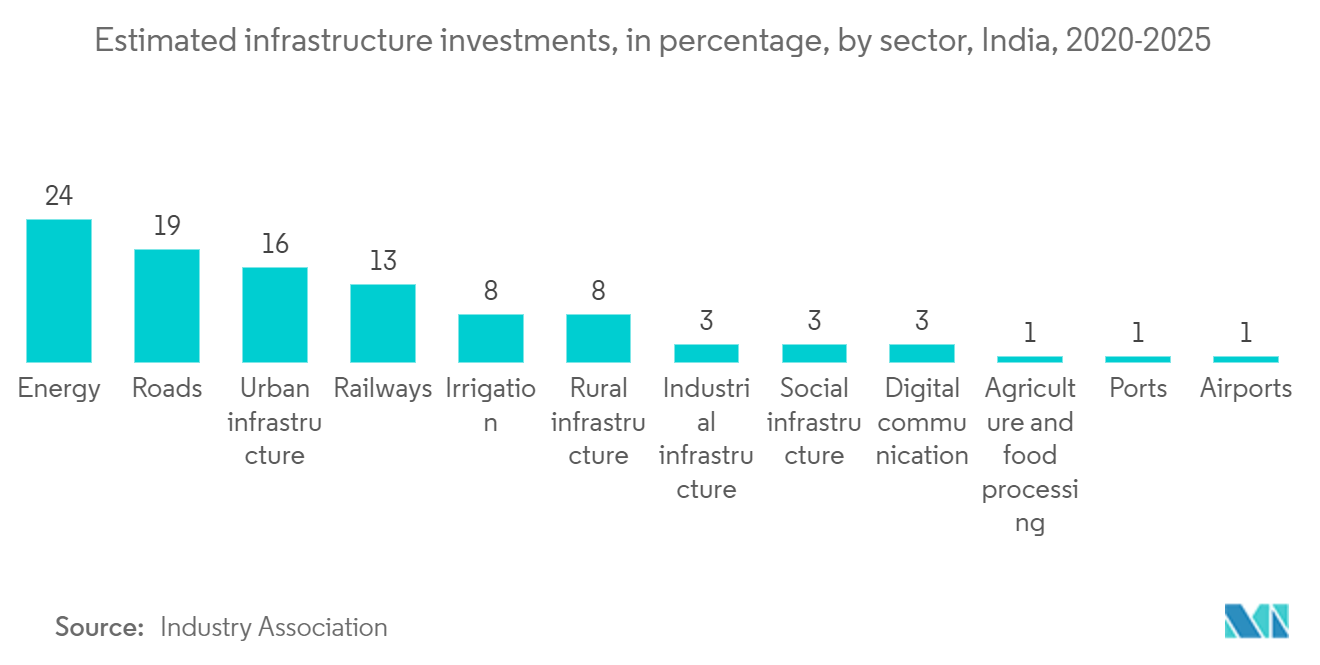Market Trends of India Infrastructure Sector Industry
Increase in Road Infrastructure Investment is Expected to Propel the Market Growth
With a sprawling network of approximately 66.71 lakh km, India boasts the world's second-largest road infrastructure. This vast expanse encompasses national highways, state highways, district roads, and rural roads, facilitating seamless connectivity across the nation.
Of particular significance are the National Highways (NH), which are pivotal in India's economic and social progress. These NHSs, constituting a mere 2% of the total road network, bear the weight of over 40% of the nation's traffic. Notably, the pace of NH expansion has surged, propelled by a corridor-centric development strategy. The construction rate has surged from 12 km/day in 2014-15 to an impressive 28.3 km/day in 2022-23.
The Indian Government is actively investing in road infrastructure development. Key initiatives, such as the Bharatmala Pariyojana, are focused on enhancing and expanding the road network. This includes the construction of expressways, economic corridors, and feeder routes. In its initial phase, the program aims to develop 34,800 km of highways featuring 27 Greenfield corridors.
Notably, it includes the construction of India's longest expressway, the 1,386 km Delhi-Mumbai Expressway. Under the Pariyojana, 60% of projects are planned under the Hybrid Annuity Mode (HAM), 10% under the BOT (Toll) Mode, and the remaining 30% under the EPC mode.
The roads and highways sector stands out for its pioneering innovative public-private partnership (PPP) models and robust contractual framework, setting it apart from other sectors. These factors have spurred substantial private investments in the sector.
Additionally, the government has introduced various incentives to further entice private sector involvement and foreign direct investments. These incentives range from the government covering the costs of project feasibility studies, providing land for right of way and wayside amenities to handling utility shifting and environmental clearances.

Government Initiatives are Driving the Infrastructure Segment
Roads: The Bharatmala Pariyojana, with its Phase I, is actively working toward the development of 34,800 km of National Highways. This ambitious project, slated for completion by 2027-2028, spans across 31 States/UTs and over 550 districts. Notably, the government has also set its sights on constructing 22 new greenfield expressways, underscoring a major stride in India's transportation infrastructure.
Airports: Launched in 2016, the Ministry of Civil Aviation's flagship Regional Connectivity Scheme, UDAN (Ude Desh Ka Aam Nagarik), aims to bolster air connectivity to regional airports in small towns. UDAN's primary objective is to democratize air travel, making it accessible to the masses by bolstering infrastructure and connectivity. In its initial five years, UDAN facilitated travel for over one crore passengers, introducing 425 new routes and 58 airports. The 2023-24 budget allotted INR 1,244.07 crore to UDAN, a twofold increase from the previous year, with plans to revive 22 airports. Furthermore, the government highlighted its intent to revive 50 additional airports, heliports, water aerodromes, and advanced landing grounds.
Railways: As of December 2023, the sector boasts a sprawling Broad Gauge network spanning 61,508 km, with electrification completed. The sector has also rolled out 35 Vande Bharat Express trains, all designed in-house, and plans to introduce six more soon. These trains connect a vast network, reaching as many as 247 districts across the nation. In a bid to combat climate change, Indian Railways has set an ambitious target to achieve Net Zero Carbon Emissions by 2030. As of October 2023, the sector already commissioned 211 MW of solar plants and 103 MW of wind power plants and further tied up a capacity of 2150 MW from renewable sources.


